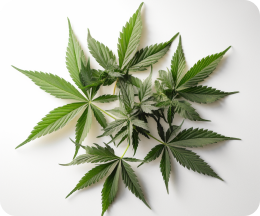What’s in Nápreva?
Our primary ingredients are terpenes. Made by all plants, scientists think 55,000 to 80,000 unique terpenes are produced by plants around the world. If you eat fruit and veggies, bake with extracts or use essential oils, you’ve used terpenes.
There are many effective products among the hundreds of prescription and over-the-counter pain treatments. But chronic pain patients must often trade long-term health for short-term relief to lead functional, if not normal lives. Terpenes may help to change that.
The terpenes in Nápreva

β-Caryophyllene
- Pure terpene isolate from cloves
- Clinically studied for treating chronic pain, inflammation and drug addiction
- No harmful side effects

α-Humulene (α-caryophyllene)
- Pure terpene isolate from lavender cotton
- Clinically studied for treating chronic pain and inflammation
- May be more effective than steroids for preventing inflammation
- No harmful side effects
Inactive ingredients

Medium-chain triglyceride oil is used to
achieve the proper concentration of each
terpene isolate and to help blend all
ingredients.

We use only the finest natural flavorings
made to certified organic food standards.
Even our beef flavoring for dogs is vegan.

Pet-safe stevia or cane sugar sweetener is
used in very small, almost trace amounts to
neutralize some of the bitterness of the
concentrated terpenes.

NáprevaPure products are just pure terpenes and natural ingredients.
Only NáprevaPlus products contain a very small amount of CBD isolate from industrial hemp. It contains no THC, the cannabis compound with psychoactive properties.
FDA GRAS (Generally Recognized as Safe)
All ingredients used in Nápreva are Generally Recognized as Safe (GRAS) by the FDA. This is not a replacement for FDA drug approval, but it’s a strong foundation for ensuring product safety.





